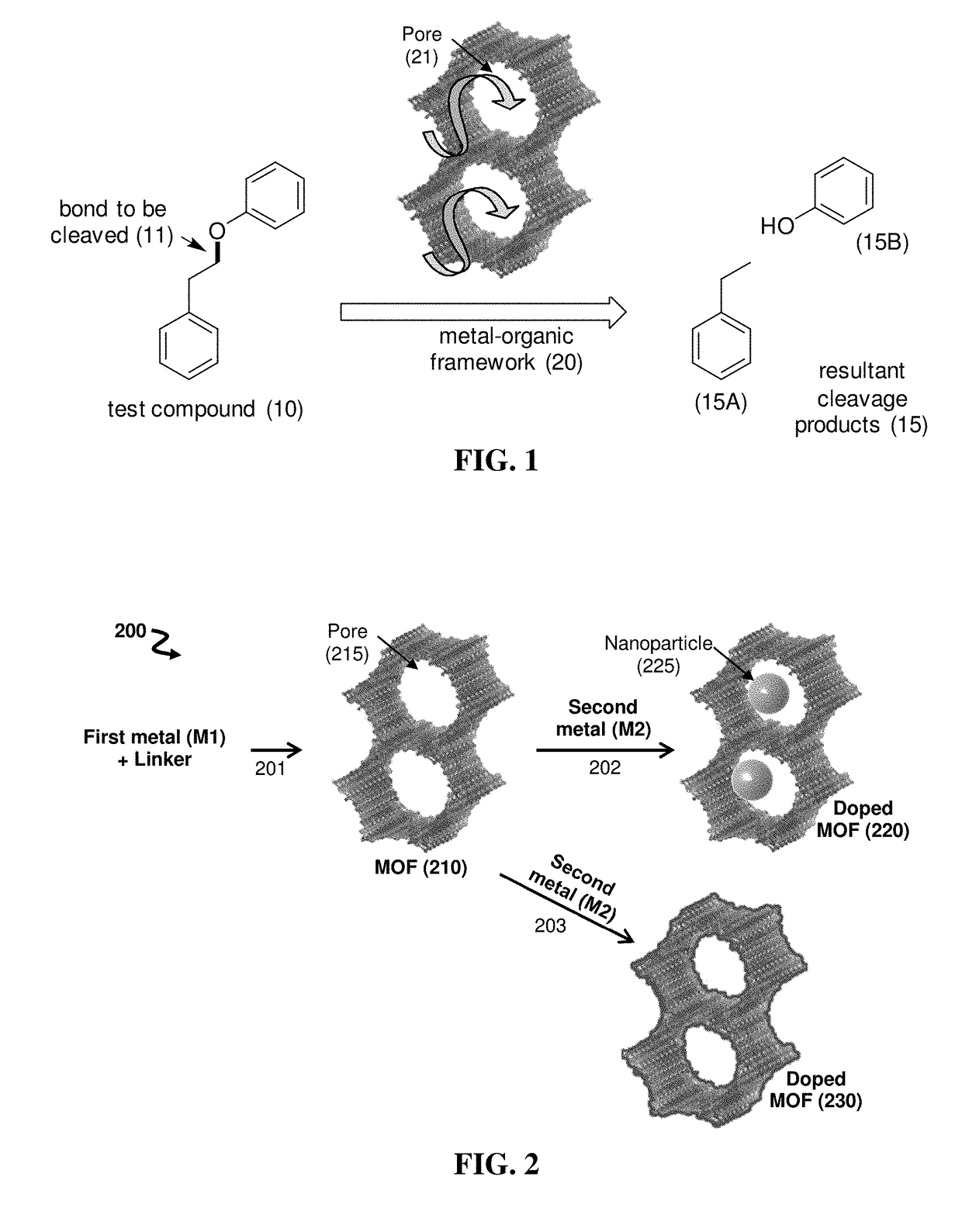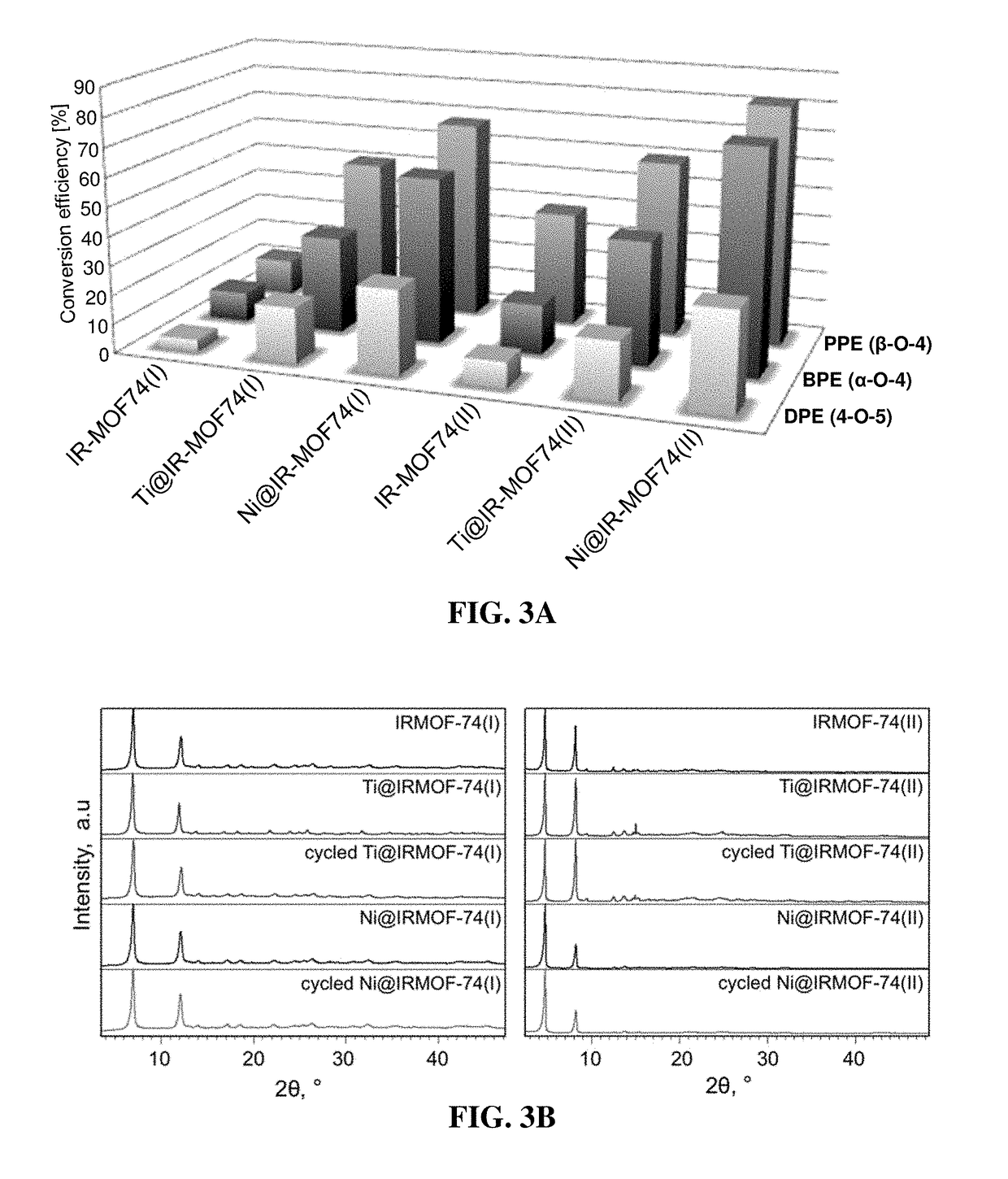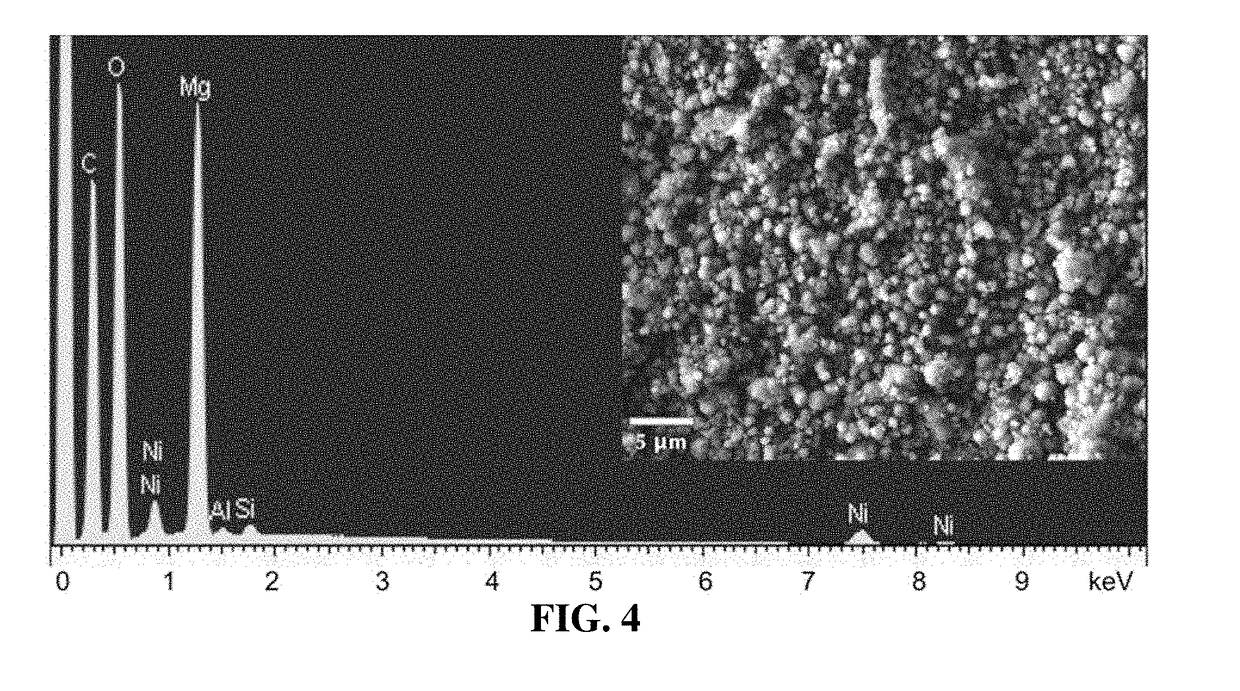Metal-organic framework catalysts for selective cleavage of aryl-ether bonds
a technology of metal-organic framework and selective cleavage, which is applied in the direction of organic-compound/hydride/coordination complex catalyst, physical/chemical process catalyst, bulk chemical production, etc., can solve the problems of complex mixtures, high energy consumption of conventional processing techniques for lignin, and challenging goals, etc., to achieve the effect of reducing non-specific hydrogenation
- Summary
- Abstract
- Description
- Claims
- Application Information
AI Technical Summary
Benefits of technology
Problems solved by technology
Method used
Image
Examples
example 1
MOF Catalysts for Selective Cleavage of Bonds in Biomass Components
[0072]Lignin is one of the most abundant source of renewable aromatics, with 200-300 Mtons per year projected production by a US biofuels industry that would process ˜1B tons of biomass to meet DOE goals. However, there are currently no efficient processes for extracting these aromatics and converting them to value-added chemicals and drop-in fuels. The technical and economic challenges are staggering, due to the quantities of material involved and lignin's recalcitrance to depolymerization. Conventional lignin degradation processes use aggressive reagents, are energy intensive (e.g., requiring reaction temperatures of about 400-800° C.), and yield complex product mixtures. Milder reaction conditions and narrower product distributions could be achieved using lignin-degrading enzymes, but these can be too fragile to be practical for large-scale biorefining.
[0073]Metal-organic frameworks (MOFs) are crystalline material...
example 2
Synthesis and Testing of MOF-Based Catalysts
[0085]MOF-based catalysts were synthesized with different length linkers, as well as different dopants. All air-sensitive manipulations were performed using standard glove-box and Schlenk line techniques under argon. All chemicals and solvents were obtained from commercial sources.
[0086]IRMOF-74(II)-Mg was isolated and activated following the published literature procedure using the reaction between Mg(NO3)2.6H2O and 3,3′-dihydroxy-[1,1′-biphenyl]-4,4′-dicarboxylic acid in DMF (see, e.g., Deng H et al., “Large-pore apertures in a series of metal-organic frameworks,” Science 2012; 336(6084):1018-23).
[0087]IRMOF-74(I)-Mg was synthesized from a solvothermal reaction of 2,5-dihydroxyterephthalic acid (98%, from Aldrich) with magnesium nitrate (99%, Aldrich) in a mixture of N,N-dimethylformamide (DMF) (99%, Acros), absolute ethanol (99.5%, Aldrich), and deionized water using a slightly modified literature protocol (see, e.g., Caskey S R et al.,...
example 3
Stability of MOF-Based Catalysts in Various Solvents
[0095]A mixture of activated IRMOF-74(I) powder (500 mg) in 20 g of the corresponding solvent (p-xylene, the ionic liquid 3-butyl-1-methyl-imidazolium acetate, or water) was placed in a glass flask equipped with a magnetic stirrer. The suspensions were stirred for 16 hours at 300 rpm at room temperature, then the solvent was removed and the MOF powders were washed with methanol and activated in vacuum. Weighting the recovered powders revealed that >99% of IRMOF-74(I) was recovered from the p-xylene and 3-butyl-1-methyl-imidazolium acetate mixtures, while in the case of IRMOF-74(I) in water only 79% or the powder was recovered, suggesting significant MOF dissolution. All recovered powders display XRD patterns essentially identical with the powder XRD of starting IRMOF-74(I) presented in FIG. 3B.
PUM
| Property | Measurement | Unit |
|---|---|---|
| temperatures | aaaaa | aaaaa |
| temperature | aaaaa | aaaaa |
| pressure | aaaaa | aaaaa |
Abstract
Description
Claims
Application Information
 Login to View More
Login to View More - R&D
- Intellectual Property
- Life Sciences
- Materials
- Tech Scout
- Unparalleled Data Quality
- Higher Quality Content
- 60% Fewer Hallucinations
Browse by: Latest US Patents, China's latest patents, Technical Efficacy Thesaurus, Application Domain, Technology Topic, Popular Technical Reports.
© 2025 PatSnap. All rights reserved.Legal|Privacy policy|Modern Slavery Act Transparency Statement|Sitemap|About US| Contact US: help@patsnap.com



